M & M's World Cruise
On March 7, the day prior to our arrival, a Vietnam Era Veteran Recognition Ceremony was held. Over 50 veterans who served between November 1, 1955 – May 15, 1975 were honored. Remarks were made by fellow-passenger VADM (Ret) Dick Gallagher. For us, this ceremony was the catalyst for a bit of angst about this visit. How would my brother feel about me stepping foot on the soil of Vietnam? Why were we suddenly so agitated and emotional, always on the verge of tears? After sharing our memories of where we were and what affected us so deeply during the late 1960s-early 1970s, we also had discussions with others on the ship about where they were and how they felt. Resident Historian, Robert J. McMahon, a retired professor of Southeast Asian History at University of Florida and Ohio State University, provided a lot of good background with lectures on “History of Southeast Asia” and “The Origins of US Involvement in Vietnam, 1945-1965”. Even so, with some trepidation, we prepared to visit Ho Chi Minh City.
3/8 & 3/9/2023 – Saigon
The central business district,
Mary Forman
53 chapters
Vietnam
March 11, 2023
|
Ho Chi Minh City, Vietnam
On March 7, the day prior to our arrival, a Vietnam Era Veteran Recognition Ceremony was held. Over 50 veterans who served between November 1, 1955 – May 15, 1975 were honored. Remarks were made by fellow-passenger VADM (Ret) Dick Gallagher. For us, this ceremony was the catalyst for a bit of angst about this visit. How would my brother feel about me stepping foot on the soil of Vietnam? Why were we suddenly so agitated and emotional, always on the verge of tears? After sharing our memories of where we were and what affected us so deeply during the late 1960s-early 1970s, we also had discussions with others on the ship about where they were and how they felt. Resident Historian, Robert J. McMahon, a retired professor of Southeast Asian History at University of Florida and Ohio State University, provided a lot of good background with lectures on “History of Southeast Asia” and “The Origins of US Involvement in Vietnam, 1945-1965”. Even so, with some trepidation, we prepared to visit Ho Chi Minh City.
3/8 & 3/9/2023 – Saigon
The central business district,
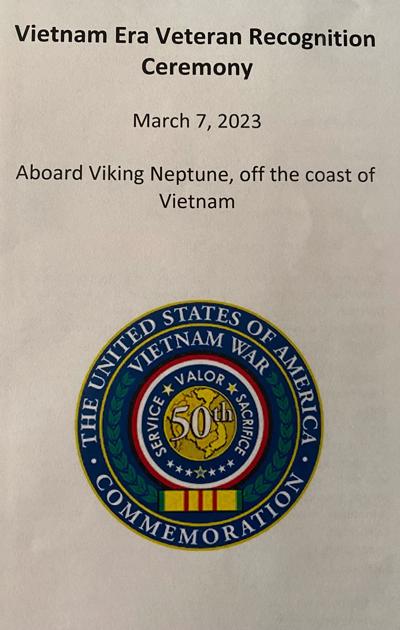
District 1 of 20, is still referred to as Saigon, while the larger area is Ho Chi Minh City. HCMC covers 160 x 60 km in area. While Hanoi is larger in size, HCMC has more people. Saigon was the capital of French Indochina, which included Vietnam, Laos, & Cambodia. When the French withdrew in 1954, they left behind 4 Bs: Baguettes, Beer, Beautiful Buildings, & Black Coffee. We regret never having the chance to have a baguette or black coffee, but the buildings & local beer were great. Just south of HCMC is the end point of the Mekong River and there are 100 kms of canals throughout the city. This is a city of motorbikes, with an estimated population of 13 million people and 10 million motorbikes. There are also, apparently, no driving rules. Maybe another gift of the French. Over 85% of Vietnam’s residents are Vietnamese with the rest made up of immigrants over the centuries from China, Myanmar, Laos, Cambodia, and Thailand. The Chinese were the first to develop a written language for the
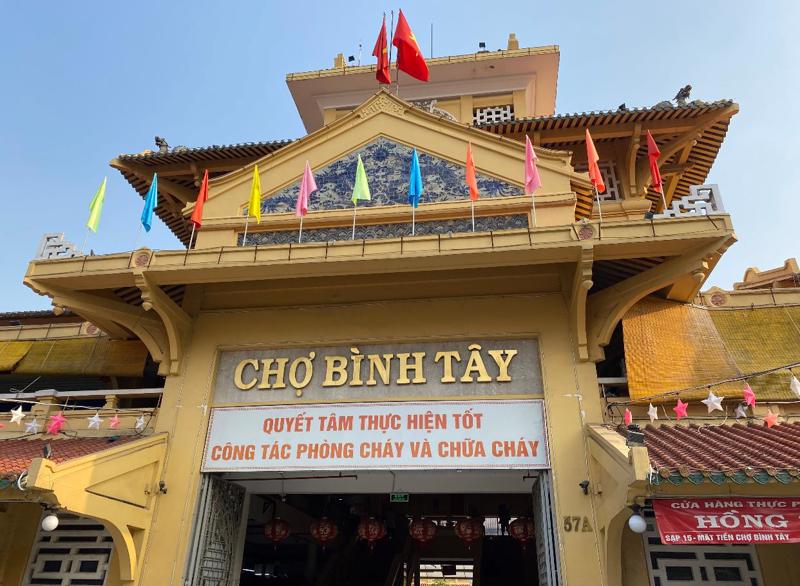


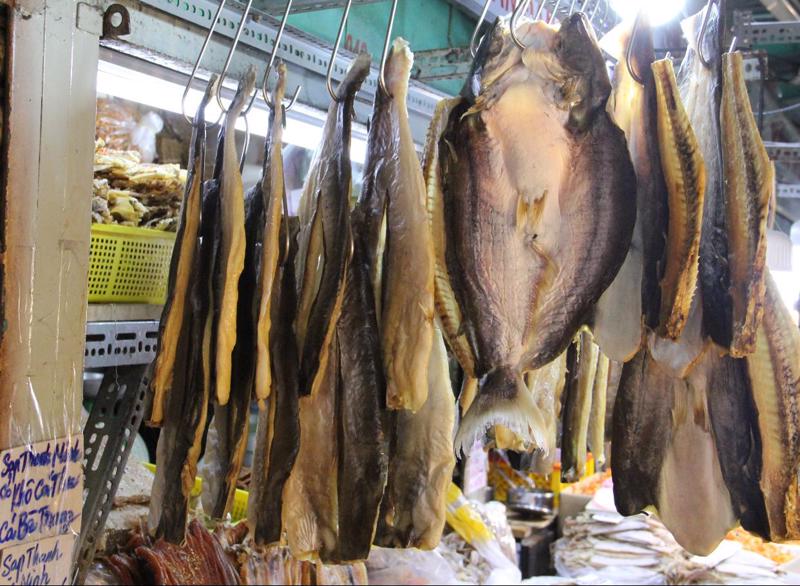
Vietnamese, but in the 18th century, the European missionaries brought the “ABC” or Latin alphabet, which was quickly adopted and still used today, with the addition of a few extra characters. All that is to say that, if you get lost downtown, you can probably find your way back to your hotel or ship because the street signs are “readable”. While Vietnam is a communist country, religion is freely allowed, with Buddhism being the religious majority, followed by Folkloric/Ancestor Worship, and Catholicism. In a national vote, the Lotus flower beat out the Cherry Blossom as the national flower of Vietnam, due (likely) to the Buddhist majority.
During our two visits into HCMC, we visited Ba Thien Temple, Cho Binh Tay Market (both in district 5), and Saigon (the French quarter - district 1); ate dinner at the Mandarine Restaurant, which serves “Finest Vietnamese Cuisine” according to the business card; and attended the Water Puppet Show of Vietnam at the Golden Dragon Water Puppet Theatre (Binh Thanh district). At the restaurant, the food was beautiful & tasty, the local beer was very good, and the live classical music was well played. The puppet show, which originated in the 11th century when farmers developed it during their “off”
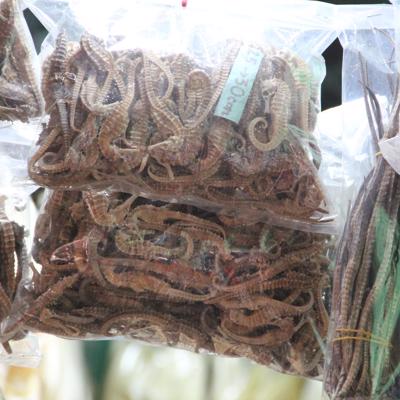
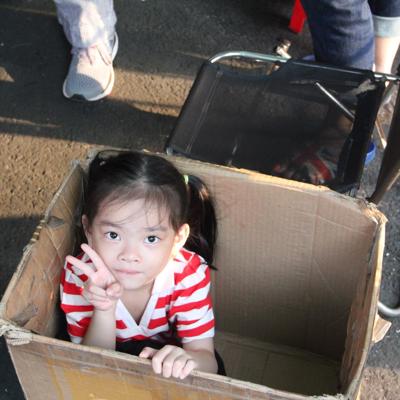
season, provides a “living portrait of Vietnam’s history and culture” and was like nothing we’d ever seen before. Ba Thien Temple is a folkloric/ancestral temple, based on worship of the sea goddess, which came with the Chinese, as well as ancestor worship. You purchase and burn incense, but only in odd numbers (1,3,5). After attending the temple, it is customary to purchase a live sparrow and then set it free. The sparrow represents your ancestors who may not have lived such a good life, and its freedom gives them the chance to try again. What happens to the sparrows? They go free; the villagers catch more sparrows and bring them into the city to sell them outside the temples; and the beat goes on. Cho Binh Tay is a wholesale market run by the Chinese community and was built by funds bequeathed in 1928 by Chinese immigrant, Quach Dam. Walking through it was sensory overload. In Saigon, we viewed the Opera House (fashioned after the Petit Palais); Independence Palace; the Central Post Office (designed by Gustave Eiffel and fashioned after the Paris train station now known as Musee d’Orsay); the Notre Dame Cathedral; and the CIA building/rooftop, where the last photographed and second to last airlift occurred when the US withdrew from Vietnam in April 1975. (It is the yellow building that
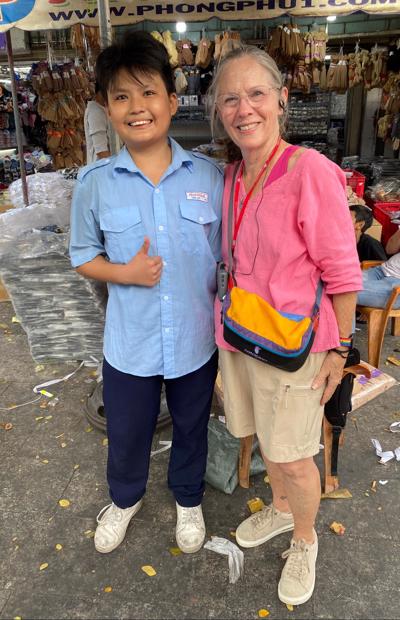
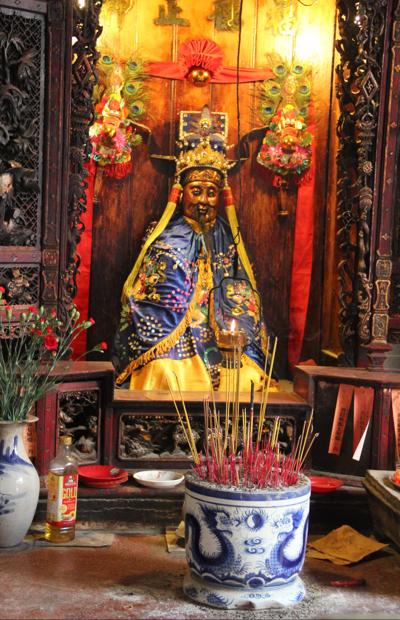
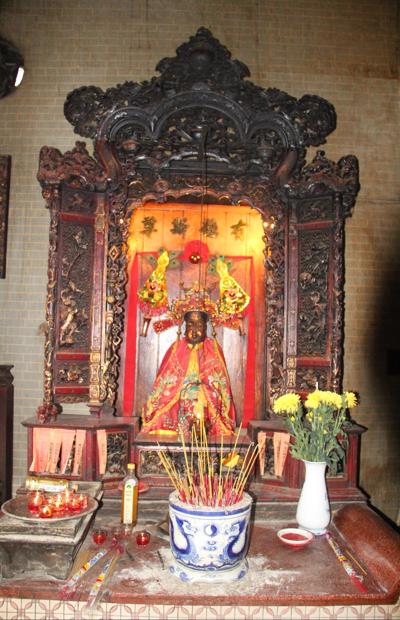
Mike is standing in front of.) Our first view of these places was by bus. Then we got onto our individual pedal cabs and were pedaled around the area for about 30 minutes. Buses, cars, motorbikes, pedal cabs all converged. We hung onto our hats, and everything else, for dear life!
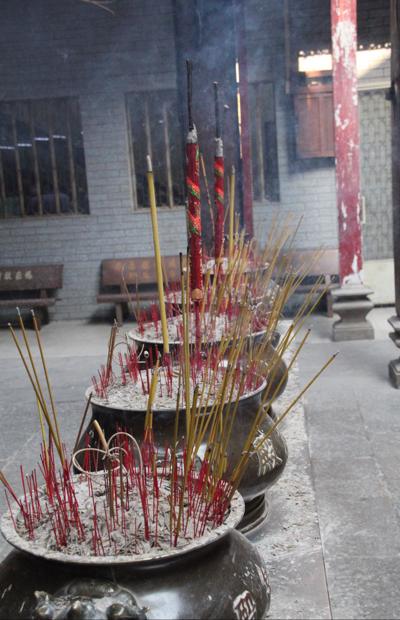
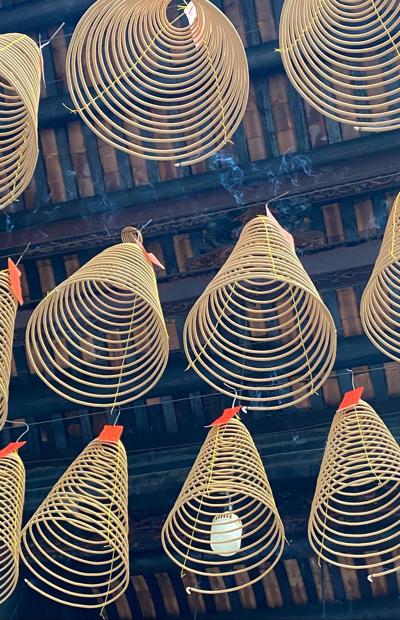
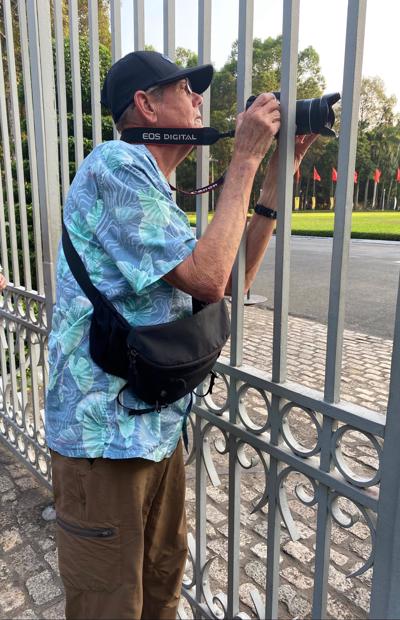
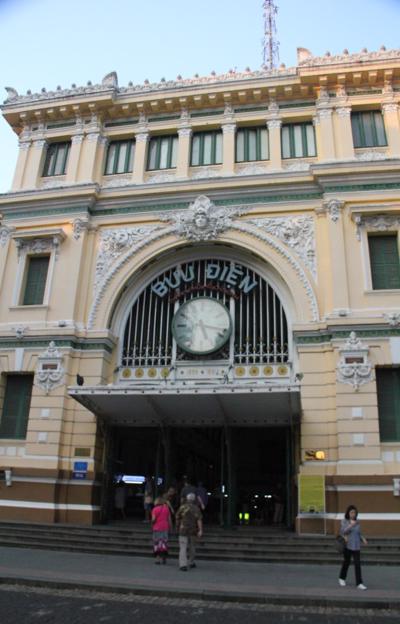
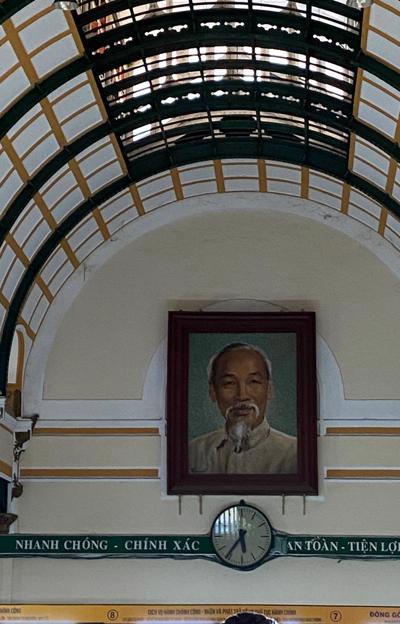
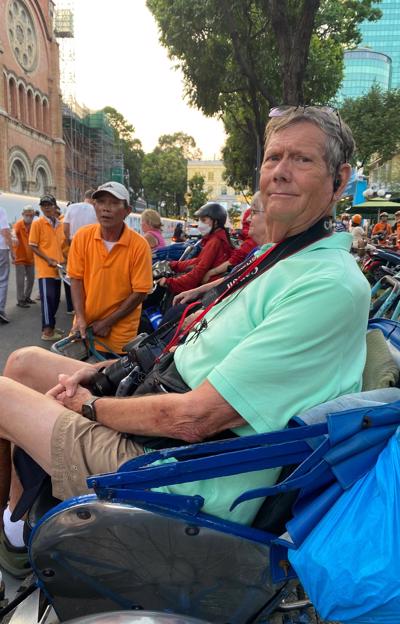
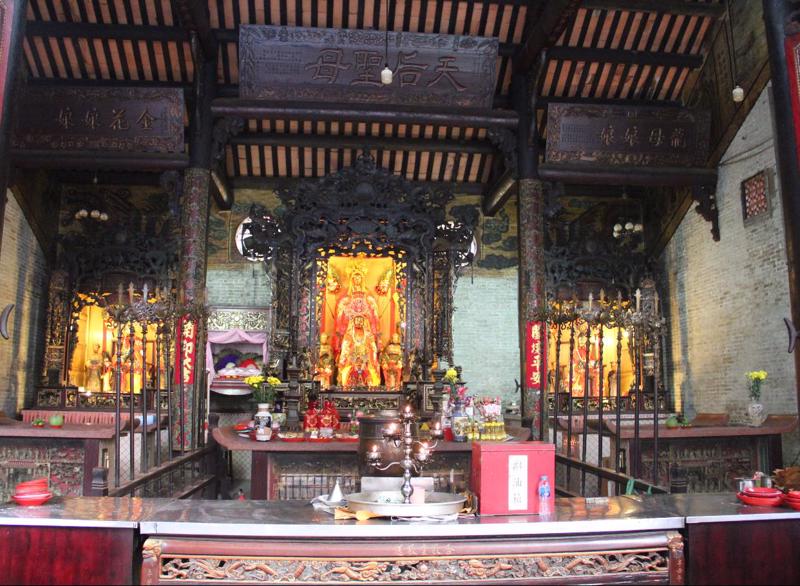
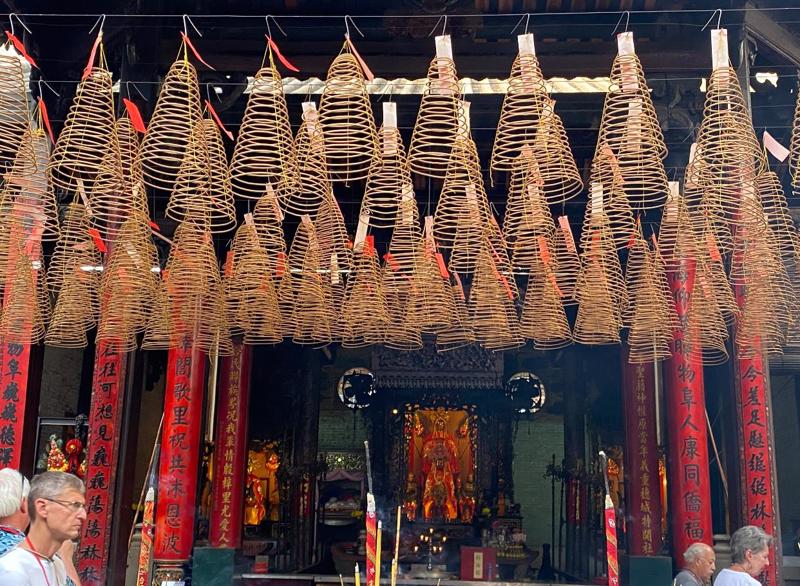
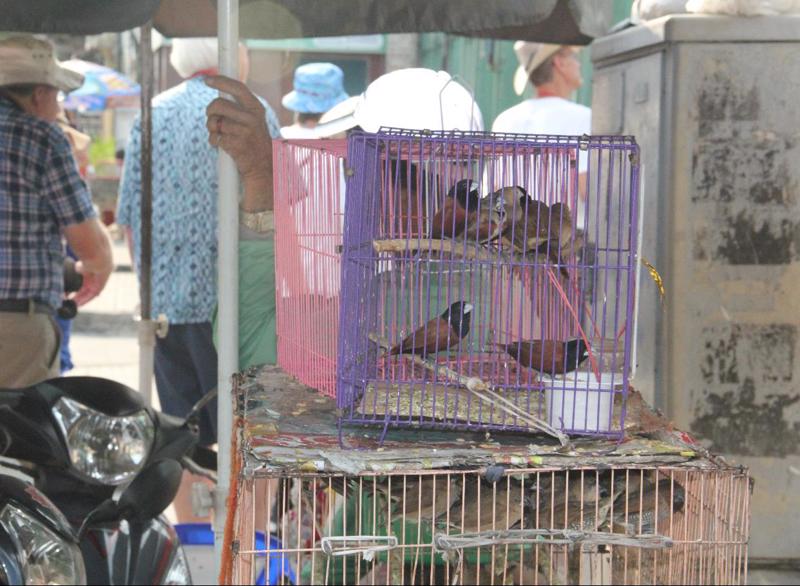

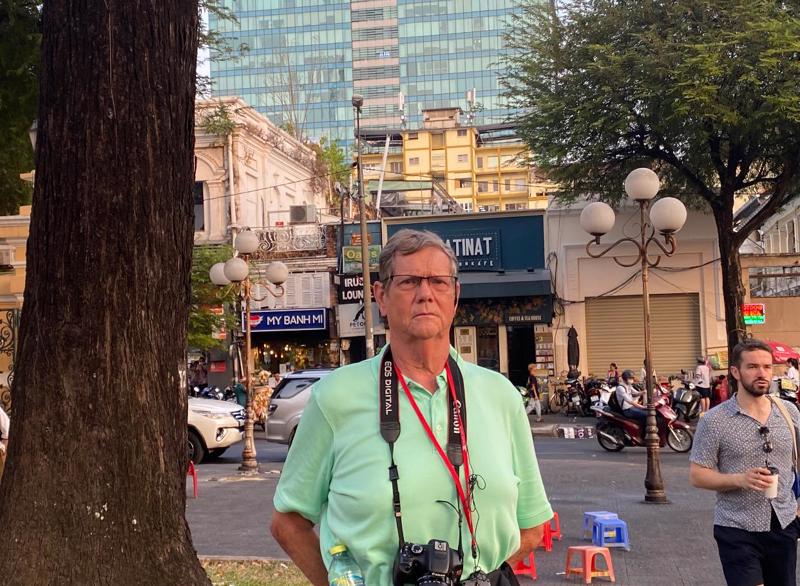
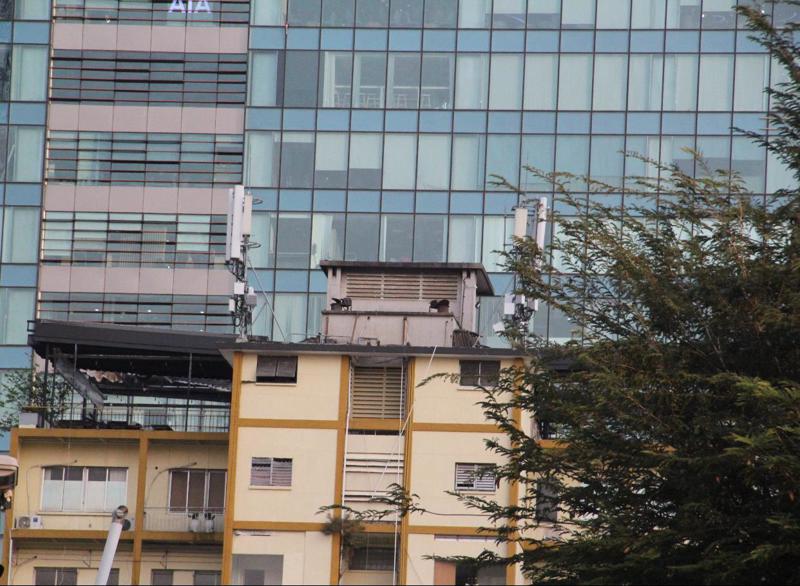
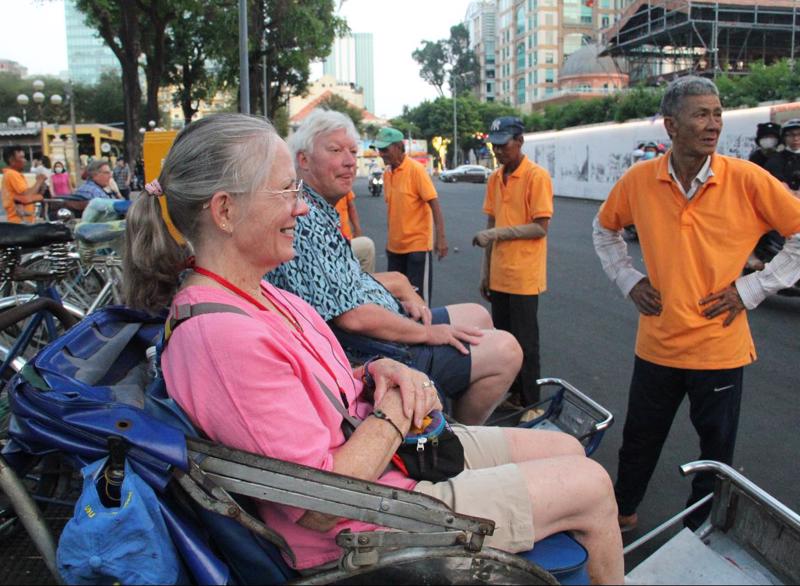



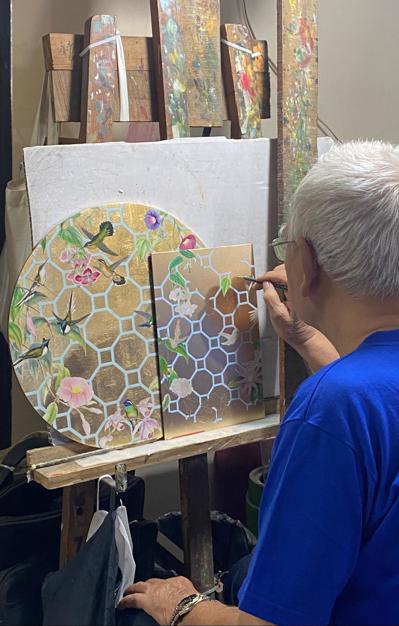
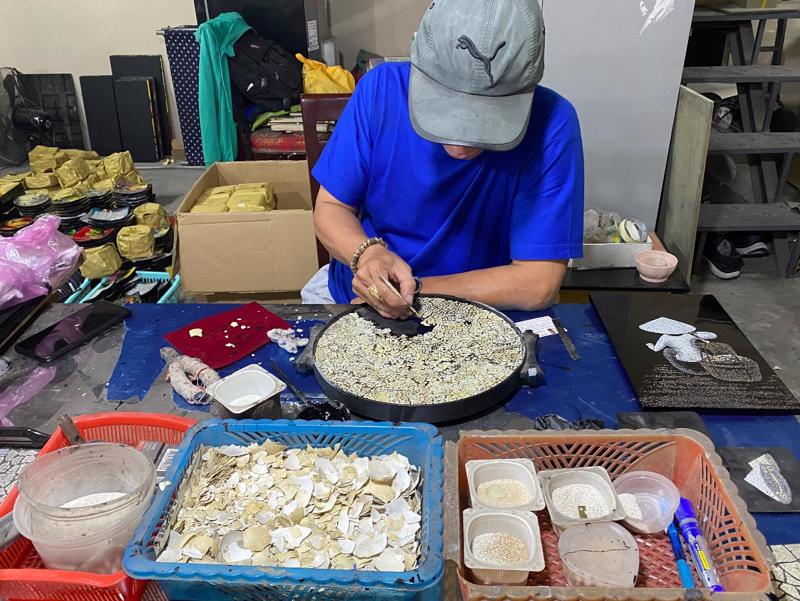
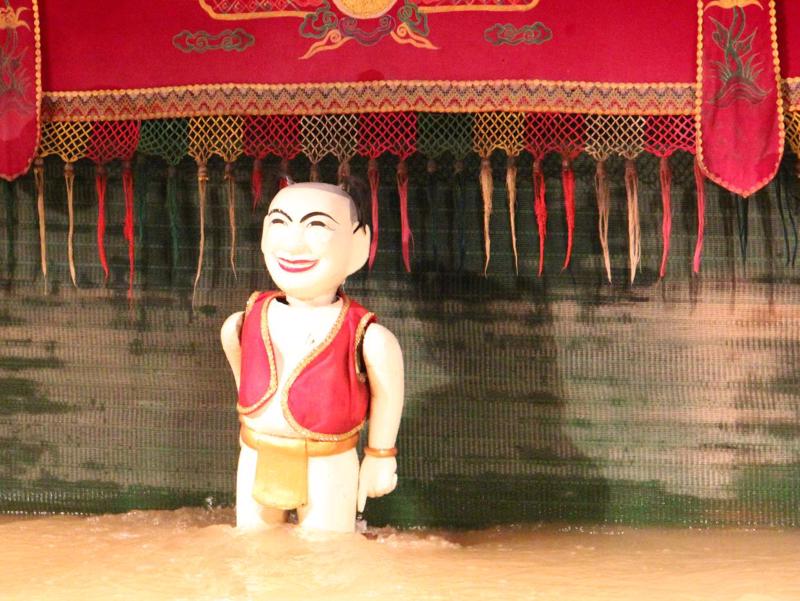
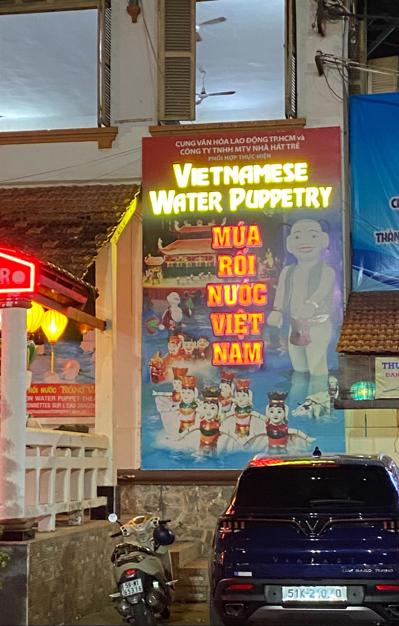
3/10/2023 – Mekong River
The five-hour roundtrip drive was well worth the time, and buses in Vietnam are large and roomy! The longest river in Southeast Asia, the Mekong River flows 4,900 km from the Tibetan Plateau in China (16,000 ft elevation) through Myanmar, Laos, Thailand, and Cambodia before finally reaching Vietnam. The nine tributaries (actually seven now, because two have been dammed up) that empty into the South China Sea just south of HCMC form the shape of a dragon. Hence the Vietnamese obsession with keeping the dragon happy, so their boats won’t overturn. Our journey started in the town of Cai Be where we boarded our boat. Although dwindling in numbers and not very active after early to mid-morning, we rode by a floating market. Then we motored over to an island where we transferred to smaller row boats that held four people each. There we toured the mangrove canal running through the middle of the island. We visited
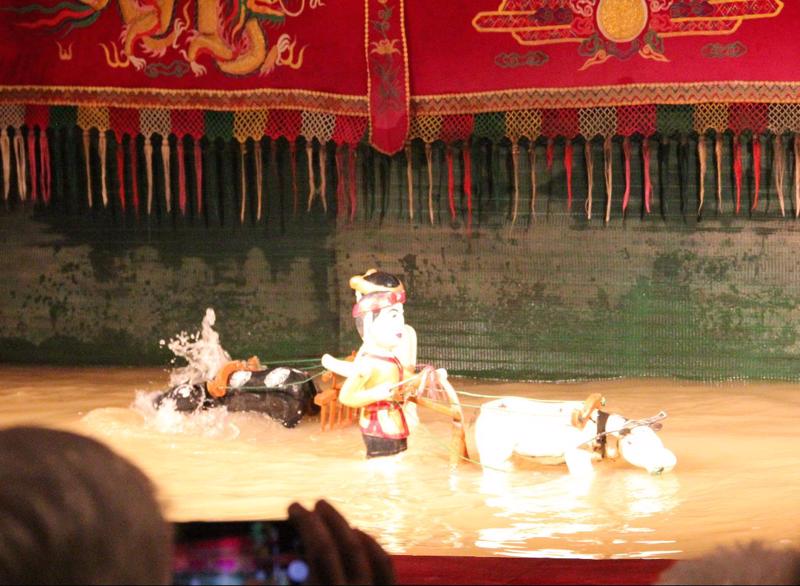
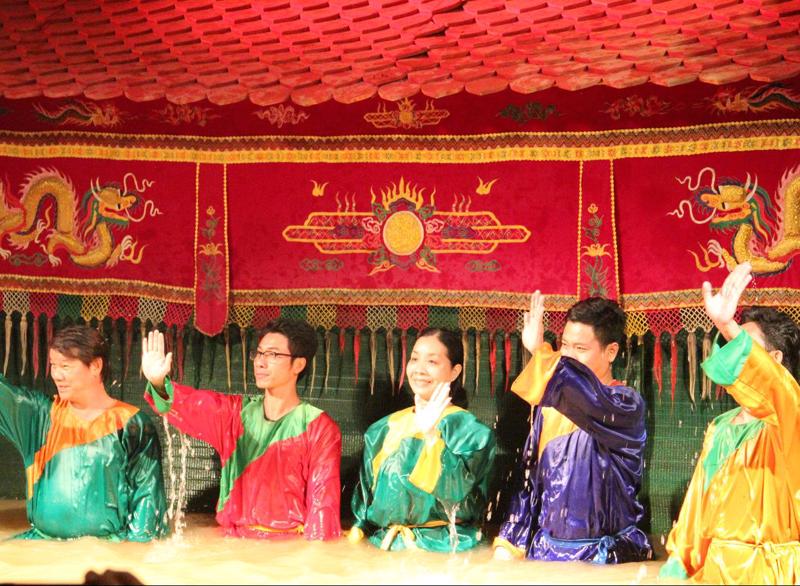
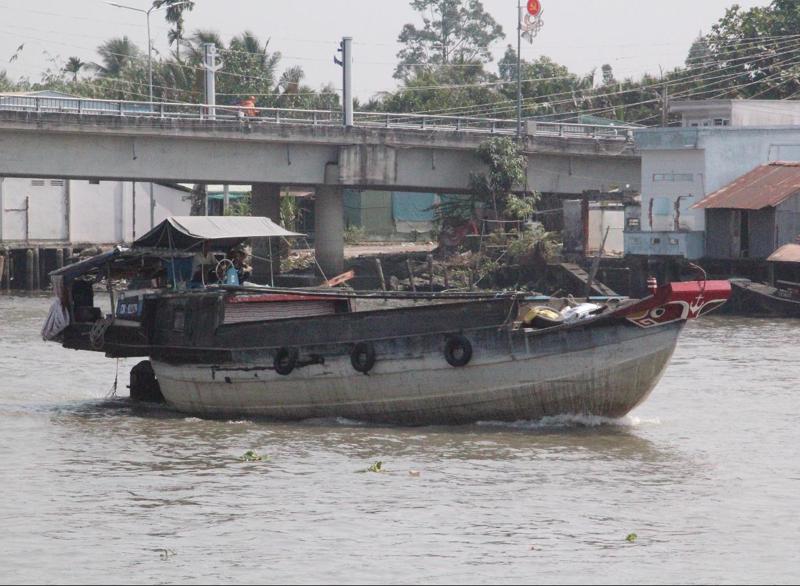

the island for refreshments of green tea and fresh pineapple (with chili salt), Lady Finger bananas (OMG), jack fruit, watermelon, & mango. There was also a musical performance with a little acting & singing accompanied by a couple of musical instruments that were new to us. After a nice long ride on the Mekong River, where at one point it was 1 km from one shore to the other, we stopped on the mainland for some shopping. Demonstrations were given on making coconut candy, puffed rice candy, and rice wine (including snake wine – ewww). And, of course, we got samples and then could buy that --- and more! We bought some chocolate and peanut butter coconut candy. They are wrapped individually in little pieces of edible rice paper so the candy doesn’t stick to the outer wrapper. And we also bought some peanut butter (Rice Krispie) treats. Back on the boat, we headed off to our restaurant. Getting up the stairs from the dock was not for the feint of heart (or the handicapped or overweight), but the walk through the garden and the meal at the other end was worth the risk. Service was family style and freshly caught and made lunch included spring rolls; freshwater prawns; a whole fried Elephant Ear fish (tilapia family), lettuce, basil, and rice “tortillas” you dip in water before making your own “fish taco”; a make-your-own chicken,
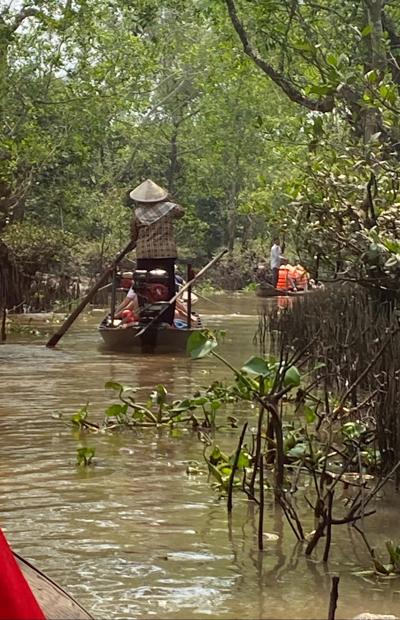
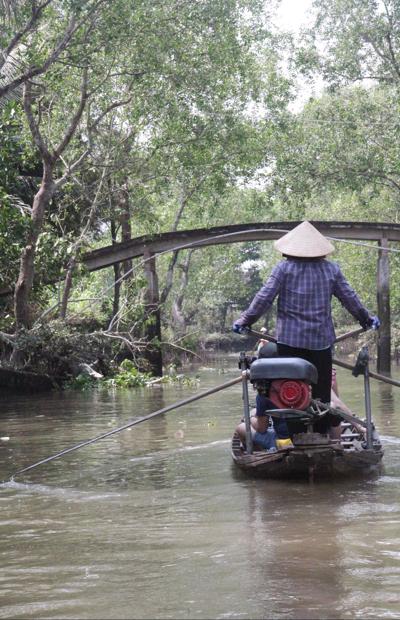
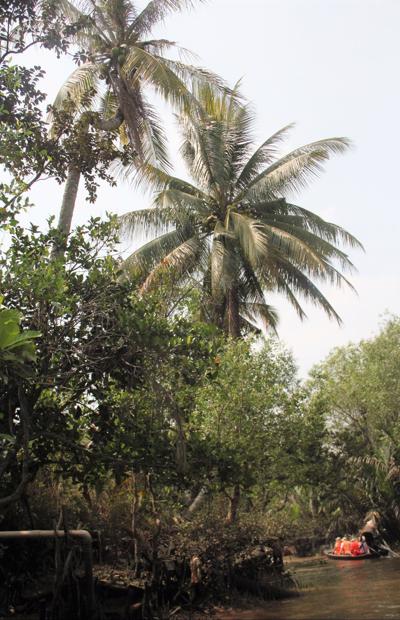
vegetables, and rice soup; and mango slices for dessert. Oh, and beer. As we made our way back to the main dock, our guide explained about the many uses of water hyacinths. We’ve always thought of them as a nuisance. The Vietnamese use them for medicinal purposes; the flowers are edible; the stalks are dried and used; and, most interesting of all, they are used to catch fish. Fishermen create a large area of hyacinths near the shore and the fish will come in to eat all the stuff that gathers in the water around the hyacinths. Then the fisherman nets off the area and catches fresh fish for consumption or to take to market. Our guide also shared with us a couple of other things of note – boats on the Mekong are like motorbikes in the city – everyone has one; and the Mekong has low tide, high tide, and rainy season flooding. The stilt houses built along the riverside are built to (mostly) withstand the flooding, is expected, and is simply something they live with.
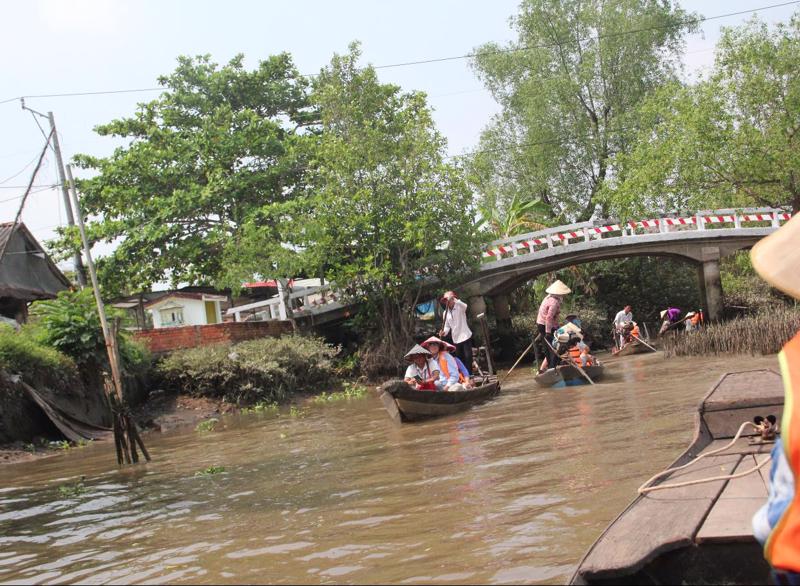
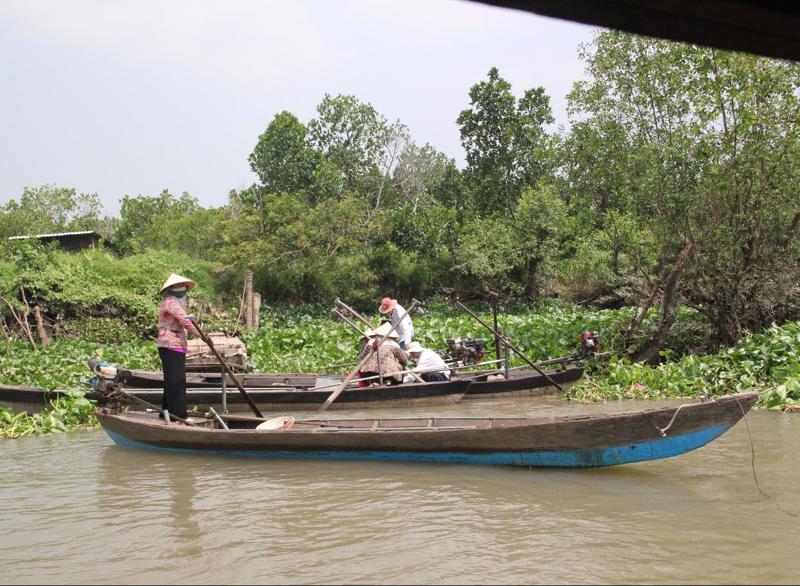
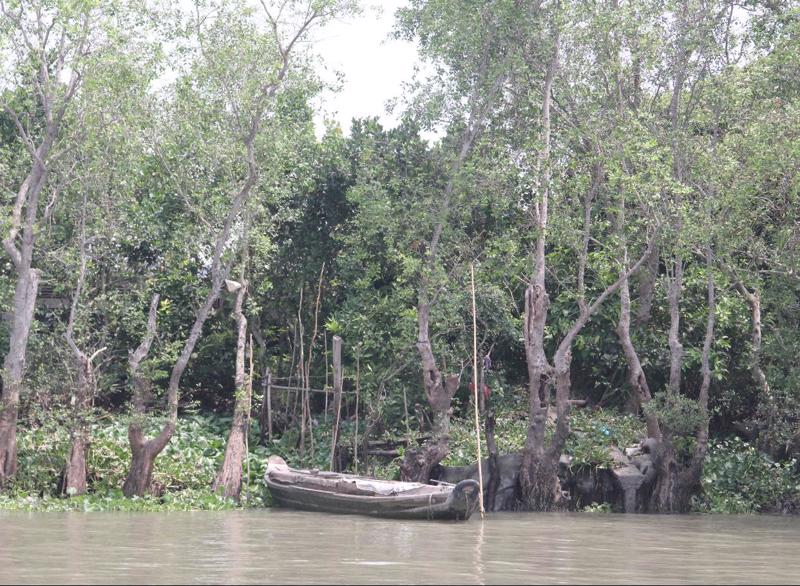

Vietnam wrap-up – We left the ship with a bit of trepidation and a whole lot of emotional baggage. What we found in HCMC was a sprawling and messy metropolis with lots of trash and lots of poverty & lots of traffic & lots of construction. We found a bustling hustling city. We also found a beautiful Parisian-like downtown area that competes with many cities we’ve visited. It is a vibrant and happening place with lots of green space, and is rebounding from the years of Covid lockdown. The Vietnamese we met were happy to have us visit and proud to show us their country. They sincerely appreciate our
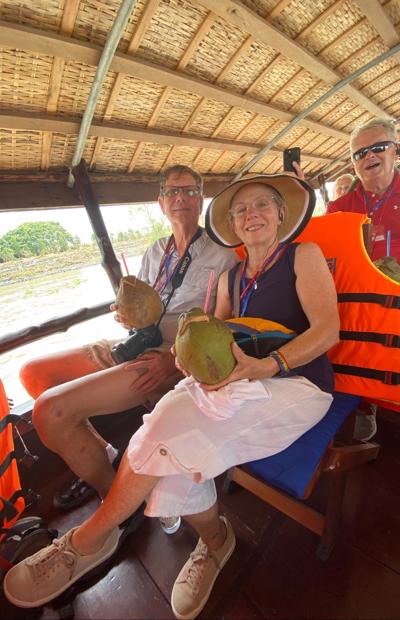
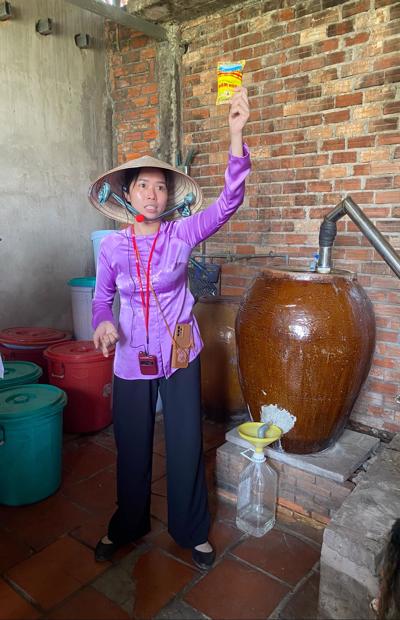
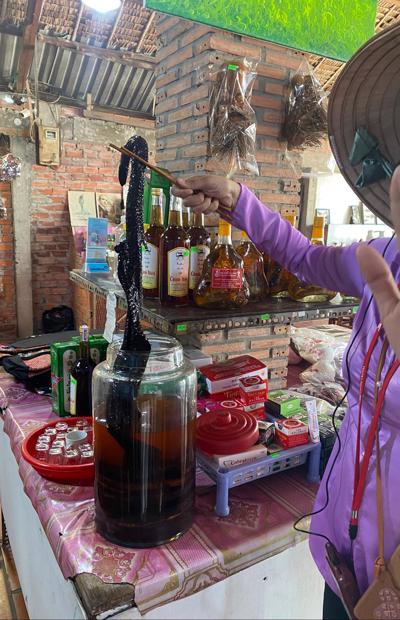
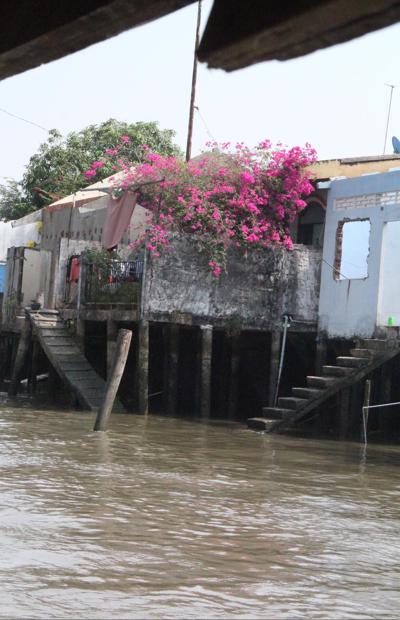
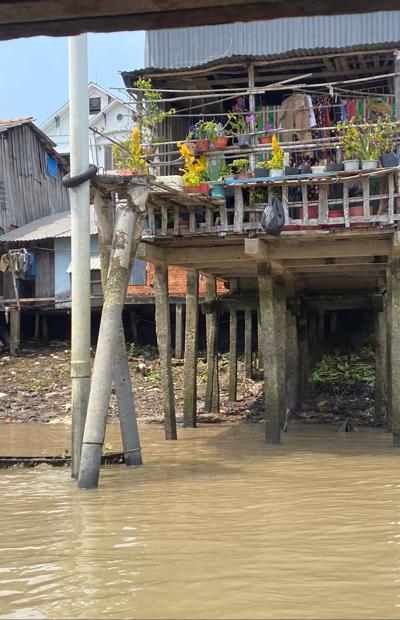
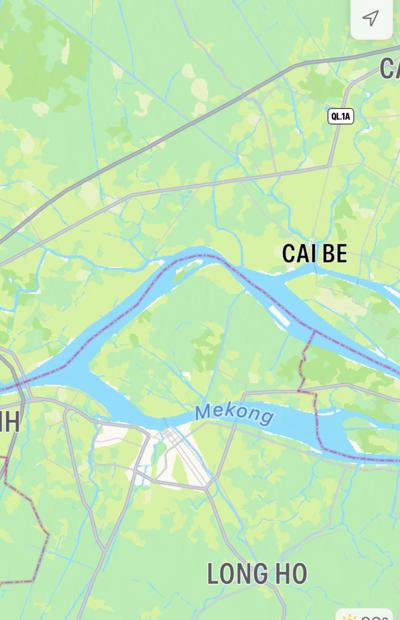
contributions to their recovering economy. One example is the small lacquer workshop and showroom we visited. It reopened a week before we arrived, specifically for the Viking Neptune. The space is one-sixth its original pre-Covid size. The artisans were hard at work (and doing amazing things with duck eggshells and other materials) and the sales staff was attentive. It does not escape us, for one minute, that we are living an extremely privileged life. As far as the Vietnam War, or the American War, goes, here is our take-away. Vietnam has been occupied and at war for centuries, even after the US withdrew. And so, “we” were just one of many who came to conquer something. Like many US military members, and for example, the parents of one of our tour guides (who are our age and live in a village outside HCMC) were exposed to, and suffered from, Agent Orange. Today’s Vietnamese are not at war, with the US or anyone else. They are just trying to build up their economy and their country and provide a better life for themselves and their children.

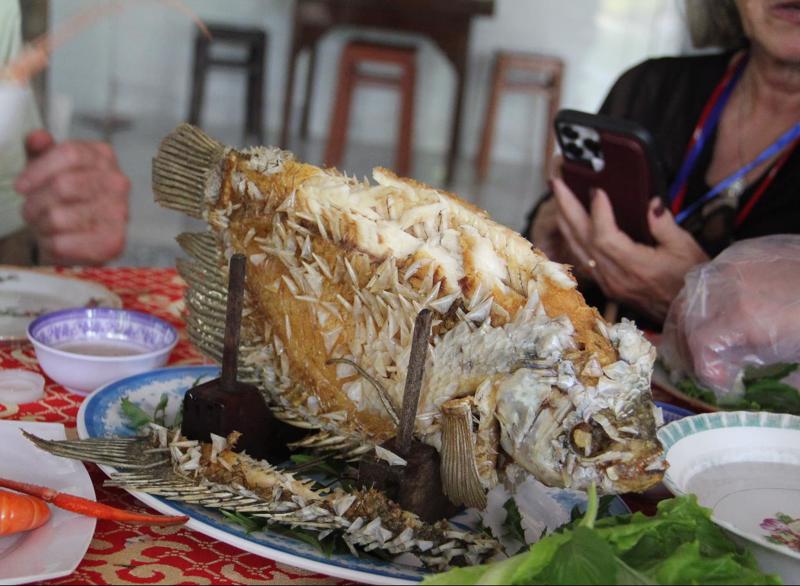


1.
Getting Ready!
2.
Getting Packed
3.
Bon Voyage
4.
Cruising-101 - Our First Sea Day
5.
Historic Cozumel
6.
Sea Day x 2
7.
South America
8.
Panama Canal Day 1
9.
Panama Canal Day 2
10.
Sea Day
11.
New Year’s Eve 2022
12.
New Year's Day 2023 +++
13.
Baja California
14.
Italian Wine & the City of Angels
15.
6 Sea Days From LA to Honolulu
16.
Aloha Hawaii!
17.
Crossing the Equator
18.
French Polynesia
19.
Crossing the International Date Line
20.
North Island - Auckland
21.
North Island - Tauranga & Napier & Wellington - Waitangi Day Weekend
22.
South Island - Doubtful & Milford Sounds
23.
Tasmania, Australia
24.
Victoria, Australia
25.
New South Wales, Australia
26.
Queensland, Australia
27.
Behind the Scenes
28.
Komodo National Park
29.
Bali, Indonesia
30.
Happy Anniversary
31.
Java, Indonesia
32.
Vietnam
33.
Thailand Part 1
34.
Singapore
35.
Malaysia
36.
Thailand Part 2
37.
Sri Lanka
38.
India Part 1
39.
India Part 2
40.
Saudi Arabia
41.
Jordan
42.
Egypt
43.
Suez Canal
44.
Israel
45.
Turkey
46.
Greece
47.
Italy
48.
Monaco
49.
Spain
50.
Portugal
51.
France
52.
England
53.
Heading Home
Share your travel adventures like this!
Create your own travel blog in one step
Share with friends and family to follow your journey
Easy set up, no technical knowledge needed and unlimited storage!